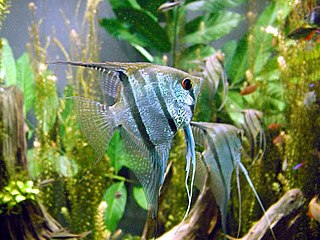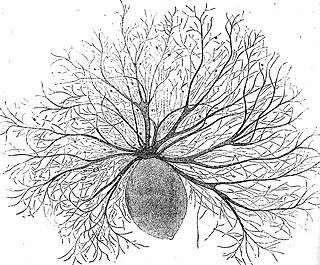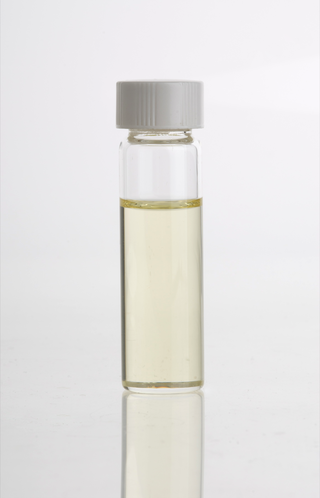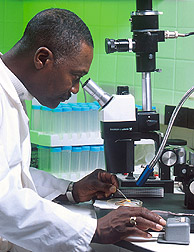Related Research Articles

The zebrafish is a freshwater fish belonging to the minnow family (Cyprinidae) of the order Cypriniformes. Native to India and South Asia, it is a popular aquarium fish, frequently sold under the trade name zebra danio. It is also found in private ponds.

A model organism is a non-human species that is extensively studied to understand particular biological phenomena, with the expectation that discoveries made in the model organism will provide insight into the workings of other organisms. Model organisms are widely used to research human disease when human experimentation would be unfeasible or unethical. This strategy is made possible by the common descent of all living organisms, and the conservation of metabolic and developmental pathways and genetic material over the course of evolution.
Vaginitis, also known as vulvovaginitis, is inflammation of the vagina and vulva. Symptoms may include itching, burning, pain, discharge, and a bad smell. Certain types of vaginitis may result in complications during pregnancy.

Ichthyophthirius multifiliis, often termed "Ich", is a parasitic ciliate described by the French parasitologist Fouquet in 1876. Only one species is found in the genus which also gave name to the family. The name literally translates as "the fish louse with many children". The parasite can infect most freshwater fish species and, in contrast to many other parasites, shows low host specificity. It penetrates gill epithelia, skin and fins of the fish host and resides as a feeding stage inside the epidermis. It is visible as a white spot on the surface of the fish but, due to its internal microhabitat, it is a true endoparasite and not an ectoparasite.

Parasitology is the study of parasites, their hosts, and the relationship between them. As a biological discipline, the scope of parasitology is not determined by the organism or environment in question but by their way of life. This means it forms a synthesis of other disciplines, and draws on techniques from fields such as cell biology, bioinformatics, biochemistry, molecular biology, immunology, genetics, evolution and ecology.

Pterophyllum is a small genus of freshwater fish from the family Cichlidae known to most aquarists as angelfish. All Pterophyllum species originate from the Amazon Basin, Orinoco Basin and various rivers in the Guiana Shield in tropical South America. The three species of Pterophyllum are unusually shaped for cichlids being greatly laterally compressed, with round bodies and elongated triangular dorsal and anal fins. This body shape allows them to hide among roots and plants, often on a vertical surface. Naturally occurring angelfish are frequently striped transversely, colouration which provides additional camouflage. Angelfish are ambush predators and prey on small fish and macroinvertebrates. All Pterophyllum species form monogamous pairs. Eggs are generally laid on a submerged log or a flattened leaf. As is the case for other cichlids, brood care is highly developed.

Praziquantel (PZQ), sold under the brandname Biltricide among others, is a medication used to treat a number of types of parasitic worm infections in mammals, birds, amphibians, reptiles, and fish. In humans specifically, it is used to treat schistosomiasis, clonorchiasis, opisthorchiasis, tapeworm infections, cysticercosis, echinococcosis, paragonimiasis, fasciolopsiasis, and fasciolosis. It should not be used for worm infections of the eye. It is taken by mouth.

Velvet disease is a fish disease caused by dinoflagellate parasites of the genera Amyloodinium in marine fish, and Oodinium in freshwater fish. The disease gives infected organisms a dusty, brownish-gold color. The disease occurs most commonly in tropical fish, and to a lesser extent, marine aquaria. Periodic use of preventive treatments like aquarium salt can further deter parasites. Regular monitoring, attentive care, and preventive measures collectively contribute to keeping Goldfish health and Velvet-free.

Cajuput oil is a volatile oil obtained by distillation from the leaves of the myrtaceous trees Melaleuca leucadendra, Melaleuca cajuputi, and probably other Melaleuca species. The trees yielding the oil are found throughout Maritime Southeast Asia and over the hotter parts of the Australian continent. The majority of the oil is produced on the Indonesian island of Sulawesi. The name "cajeput" is derived from its Malay name, kayu putih or "white wood".

Gyrodactylus salaris, commonly known as salmon fluke, salmon killer, or the Norwegian salmon killer is a tiny monogenean ectoparasite which lives on the body surface of freshwater fish. This leech-like parasite has been implicated in the reduction of Atlantic salmon populations in the Norwegian fjords. It also parasitises other species, including rainbow trout. G. salaris requires fresh water, but can survive in brackish water for up to 18 hours.

Feeder fish is the common name for certain types of small, inexpensive fish commonly fed as live food to other captive animals such as predatory fishes or carnivorous aquarium fish, turtles, crocodilians and other piscivores that naturally hunt in fresh, brackish or salt water ecosystems.

Acanthamoeba keratitis (AK) is a rare disease in which amoebae of the genus Acanthamoeba invade the clear portion of the front (cornea) of the eye. It affects roughly 100 people in the United States each year. Acanthamoeba are protozoa found nearly ubiquitously in soil and water and can cause infections of the skin, eyes, and central nervous system.

Ornamental fish kept in aquariums are susceptible to numerous diseases. Due to their generally small size and the low cost of replacing diseased or dead fish, the cost of testing and treating diseases is often seen as more trouble than the value of the fish.

Medical microbiology, the large subset of microbiology that is applied to medicine, is a branch of medical science concerned with the prevention, diagnosis and treatment of infectious diseases. In addition, this field of science studies various clinical applications of microbes for the improvement of health. There are four kinds of microorganisms that cause infectious disease: bacteria, fungi, parasites and viruses, and one type of infectious protein called prion.
Dactylogyrus is a genus of monogeneans in the Dactylogyridae family.

The guppy, also known as millionfish or the rainbow fish, is one of the world's most widely distributed tropical fish and one of the most popular freshwater aquarium fish species. It is a member of the family Poeciliidae and, like almost all American members of the family, is live-bearing. Guppies originate from northeast South America, but have been introduced to many environments and are now found all over the world. They are highly adaptable and thrive in many different environmental and ecological conditions. Male guppies, which are smaller than females, have ornamental caudal and dorsal fins. Wild guppies generally feed on a variety of food sources, including benthic algae and aquatic insect larvae. Guppies are used as a model organism in the fields of ecology, evolution, and behavioural studies.

Like humans and other animals, fish suffer from diseases and parasites. Fish defences against disease are specific and non-specific. Non-specific defences include skin and scales, as well as the mucus layer secreted by the epidermis that traps microorganisms and inhibits their growth. If pathogens breach these defences, fish can develop inflammatory responses that increase the flow of blood to infected areas and deliver white blood cells that attempt to destroy the pathogens.
In biology, a pathogen, in the oldest and broadest sense, is any organism or agent that can produce disease. A pathogen may also be referred to as an infectious agent, or simply a germ.
Amyloodinium ocellatum is a cosmopolitan ectoparasite dinoflagellate of numerous aquatic organisms living in brackish and seawater environments. The dinoflagellate is endemic in temperate and tropical areas, and is capable of successfully adapting to a variety of different environments and to a great number of hosts, having been identified in four phyla of aquatic organisms: Chordata, Arthropoda, Mollusca and Platyhelminthes. Moreover, it is the only dinoflagellate capable of infecting teleosts and elasmobranchs.
Gyrodactylus turnbulli is an ectoparasite from the class Monogenea, is part of the phylum Platyhelminthes, and from the genus Gyrodactylus. It only requires one host to transmit an infection; however, since this parasite lacks oncomiracidium, it must rely on either the adult or subadult for spread of infection. Found in freshwater, this flatworm is commonly found on the gills and fins of the guppy, Poecilia reticulata. G. turnbulli was said to be host specific, but an experiment where parasitologists artificially infected guppies suggests that the parasite can infect a wider range of species. This ability is achievable by host switching, which promotes speciation.
References
- 1 2 Shivappa, Raghunath B.; Christian, Larry S.; Noga, Edward J.; Law, Jerry M.; Lewbart, Gregory A. (2015-04-01). "Laboratory Evaluation of Safety and Efficacy for Melafix (Melaleuca cajuputi Extract)". Journal of Exotic Pet Medicine. Backyard Poultry. 24 (2): 188–192. doi:10.1053/j.jepm.2015.04.020. ISSN 1557-5063.
- 1 2 Schelkle, Bettina; Snellgrove, Donna; Jones, Lewis L.; Cable, Jo (2015-07-23). "Efficacy of commercially available products against Gyrodactylus turnbulli infections on guppies Poecilia reticulata". Diseases of Aquatic Organisms. 115 (2): 129–137. doi:10.3354/dao02886. ISSN 0177-5103. PMID 26203884.
- ↑ Stanton, Lindsey (2021-03-26). "How To Use Melafix & Does It Work?". It's A Fish Thing. Retrieved 2022-01-11.
- 1 2 Rácz, Anita; Allan, Brooke; Dwyer, Toni; Thambithurai, Davide; Crespel, Amélie; Killen, Shaun S. (2021-02-26). "Identification of Individual Zebrafish (Danio rerio): A Refined Protocol for VIE Tagging Whilst Considering Animal Welfare and the Principles of the 3Rs". Animals. 11 (3): 616. doi: 10.3390/ani11030616 . ISSN 2076-2615. PMC 7996851 . PMID 33652779.
- ↑ Olenik, Joe (2015-10-12). "Is There a Doctor in the Tank?". Pet Age. Retrieved 2022-01-11.
- ↑ Fenner, Bob. "Choose Your Weapon: Freshwater Fish Disease Treatment Options". www.wetwebmedia.com. Retrieved 2022-01-11.
- ↑ B., Sean (2021-07-01). "Bettafix and Melafix - 5 Differences You Should Know". The Aquarium Adviser. Retrieved 2022-01-11.
- ↑ "Approved aquarium chemicals, treatments and antibiotics - DAWE". www.awe.gov.au. Retrieved 2022-01-11.